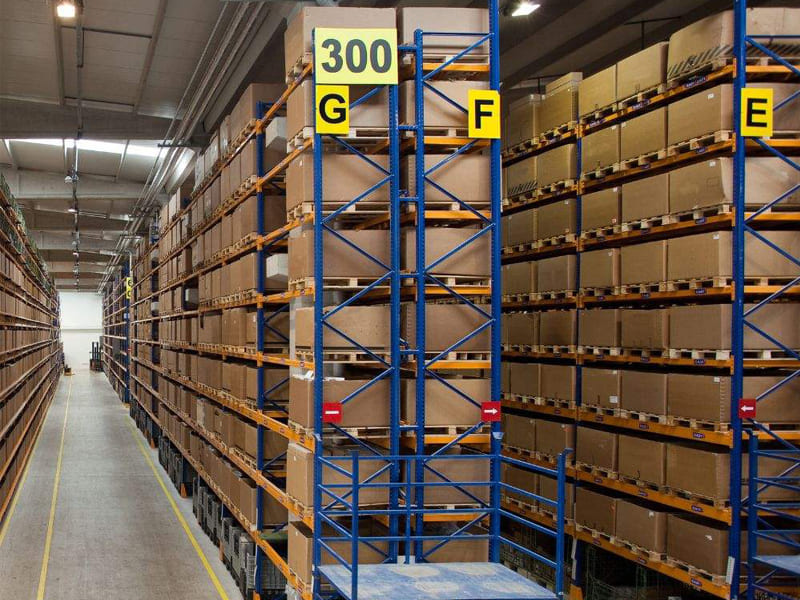This guide outlines essential considerations, types of pallet racking, and the various factors affecting weight limits to help warehouse managers and operators make informed decisions.

Pallet racking is integral to optimizing storage space in warehouses. Various types of racking systems accommodate different storage needs, including:
In the UK, the most common pallet size is 1200mm x 1000mm, while in the EU, it is typically 1200mm x 800mm. Each pallet racking system is custom-designed based on the specific needs of the warehouse, including load requirements and available space.
Knowing the weight limits of pallet racking systems is vital for several reasons:
Several critical factors determine the weight limits of pallet racking systems:
1. Bay Clear Entry Width
This measurement indicates the distance between the inside faces of vertical beams. It's essential to ensure pallets fit comfortably and safely within the racking system.
2. Beam Depth
Measured across the top of the beam, standard beam depths are typically 40mm or 50mm. Deeper beams can support greater weights, making this measurement crucial for capacity planning.
3. Beam Face Depth
Distinct from beam depth, the face depth varies significantly. Ranging from 80mm to 150mm, deeper face depths generally support higher weight limits, enhancing the overall strength of the racking system.
4. Racking Beam Section
Racking beams can be categorized into two types:
5. Box Beams: These are fully enclosed and constructed from C-sections, ideal for heavier loads.

Overcome the efficiency plateau with automated storage and retrieval systems.
Schedule a consultation with Vison for a comprehensive view.
6.Open Beams: Made from a single-formed steel section, these are better suited for lighter weights.
7. Racking Frame Size
The dimensions of the racking frame, including height (H) and width (W), directly affect the maximum load it can bear. Accurate measurements are crucial for optimizing storage capacity.
8. Vertical Beam Pitch
This term refers to the height of each storage level within the racking system. A varied pitch across the racking can influence the overall load limits, as differing beam levels may have distinct capacities.
9. Upright Duty
Racking systems are categorized by duty ratings: Heavy (H), Medium (M), and Standard (S). Each rating indicates the maximum weight the system can safely hold, and understanding this classification is essential for calculating load limits.
Generally, the maximum load for pallet racking systems varies based on the type of frame:
These limits depend on the frame's height and depth, reinforcing the importance of tailored designs for specific warehouse applications.
To determine the maximum weight your pallet racking can support, use the following formula:
Maximum Load per Pair of Beams × Frame Load = Pallet Racking Capacity
Additionally, to calculate the total number of storage layers, apply this formula:
Frame Load / Maximum Load per Pair of Beams = Total Number of Layers
Exceeding the weight limits of pallet racking systems can lead to serious consequences, including:
As specialists in storage solutions, Vison Storage offers bespoke pallet racking systems tailored to individual needs. Our designs consider weight capacities, available space, and operational requirements to ensure optimal performance and safety.
Derechos de autor
© 2024 Jiangsu Vijing Logistics Technology Co., Ltd. Reservados todos los derechos.
 RED SOPORTADA
RED SOPORTADA